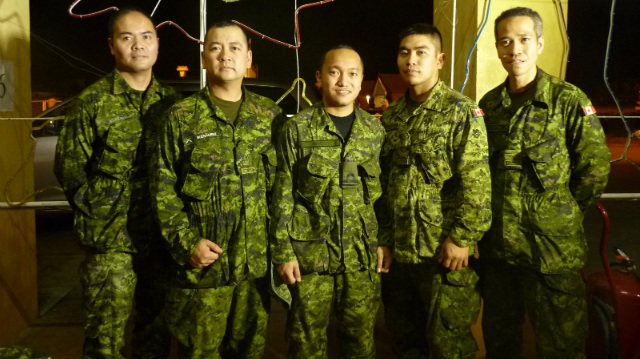SUMMARY
This is AI generated summarization, which may have errors. For context, always refer to the full article.
CAPIZ, Philippines – It was a call Jay Manimtim did not think twice about taking.
He had seen the heart-wrenching images of the devastation brought by Super Typhoon Yolanda (Haiyan) from his home in Canada and knew he had to help.
Shortly after, the healthcare administrator with the rank of major for the Canadian Forces received a call from his headquarters asking him to go on mission to the Philippines as part of the Disaster Assistance Response Team (DART).
Manimtim was in the middle of the allocated 8-month parental leave, taking turns with his wife to take care of their one-year old son Jacob, but there was no question as to what his answer would be.
“I didn’t even have to think about it. I immediately said yes,” said Manimtim, cutting short his parental leave.
Manimtim was born and raised in Rosario, Cavite and migrated to Canada when he was 16 years old.
His last visit to the Philippines was in 2009, and he remembers how different it was from when he first left. He remembers how he felt hopeful about the country’s progress. It was a memory that saddened him when he saw the images of what Yolanda destroyed.
“I felt really compelled to help, being born and raised here in the Philippines. I felt a deep connection,” said Manimtim.
Manimtim is one of the Filipino-Canadians on the DART who are on mission to the Philippines as liaison officers (LOs). As LOs, they will be assigned to live within a certain community and work closely with civilian local authorities to better understand the needs of the remote communities in terms of humanitarian aid.
“It’s our job (as liaison officers) to liaise with local leaders, NGOs, and international organizations to relieve the affected population.” It is being a Filipino-Canadian that puts Manimtim and other members of the LO in the best place to do this.
“I know what it likes to be Filipino. This is my culture, this is my heritage. I know how Filipinos think. I know the intricacies of the language, the intricacies of how Filipinos think. It is my pleasure to be here [to help],” he said.
There were a total of 23 countries that came to the aid of the Philippines and provided relief and or civil military assets for emergency relief operations in light of Typhoon Yolanda. According to the Civil Military coordination hub in Tacloban, this is the largest humanitarian response sent to a single country.
– Rappler.com
Add a comment
How does this make you feel?

There are no comments yet. Add your comment to start the conversation.